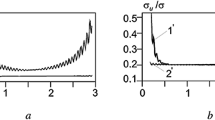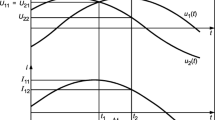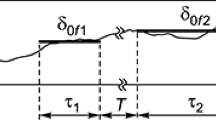Conclusions
The above investigations have shown that the proposed oscillographic method is suitable for measuring large deviations (over 100 kc) with modulation indexes exceeding 10 and carrier frequencies up to 7·109 cps; under these conditions the error of measurement is less than 1%. The equipment required for measurements by this method is simple and available in any radio laboratory.
Similar content being viewed by others
Literature cited
L. Hibbard and D. Caro, “Instantaneous measurement of a varying frequency”, J. Sci. Instr.29, 11 (1952).
S. M. Rubchinskii, D. A. Vasil'ev, B. F. Kuz'min and N. I. Fedorenko, Radiotekhnika i Élektronika, No. 7, v. 1 (1956).
A. M. Bonch-Bruevich, Application of Electron Tubes in Experimental Physics [in Russian] (GITTL, Moscow, 1955).
E. I. Manaev, Radiotekhnika, No. 9–10, (1958).
Rights and permissions
About this article
Cite this article
Shpan'on, P.A., Petrov, N.B. An oscillographic method of measuring frequency deviation of frequency-modulated signals. Meas Tech 3, 226–231 (1960). https://doi.org/10.1007/BF00975953
Issue Date:
DOI: https://doi.org/10.1007/BF00975953




